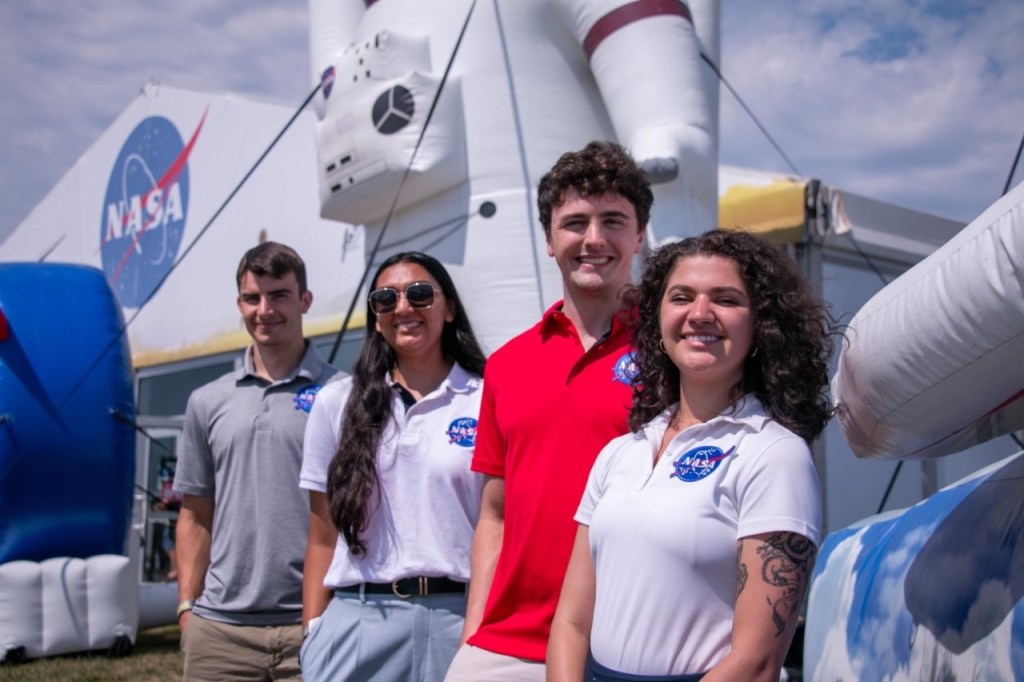A Menlo Park high-technology firm has won a NASA research grant under the aerospace agency’s Small Business Technology Transfer Research (STTR) program that could improve the efficiency of computer flight simulation for a wide variety of aircraft.
Intelligent Aerodynamics, working with Stanford University, will receive one of two grants that will be awarded by NASA’s Dryden Flight Research Center at Edwards, Calif., under an STTR Phase II research and development proposal in late May. The firm’s proposal was one of 27 funded by NASA under the agency’s 2003 STTR program, and is valued at up to $600,000 over a two-year performance period.
The NASA grant will fund Intelligent Aerodynamics’ development of mathematical algorithms for steady and unsteady multi-disciplinary simulation of flight vehicles.
“Current simulation techniques require the use of many programs to address the broad range of flight conditions commonly encountered by a single aircraft during different phases of flight, such as takeoff and landing, subsonic cruise and supersonic dash or cruise,” said Rodney Bogue, STTR program manager at NASA Dryden.
“Once these tools are developed, they will enable more optimized designs, resulting in safer and cheaper products for a broad range of both new and existing aircraft ranging from missiles and high performance military aircraft to tiltrotors and unmanned aerial vehicles,” he added. “The code resulting from this effort will reduce this effort, and streamline and integrate the results for a broad range of engineering disciplines.”
Bogue noted that Intelligent Aerodynamics’ proposal was chosen based upon technical merit and innovation, value to NASA, commercial potential, company capabilities, and the firm’s performance under an earlier Phase I STTR grant.
“Phase I awards are for the purpose of proving a proposed concept, and are funded up to a maximum of $70,000 for a six-month period,” Bogue explained. “Phase II selections are made from high-performing Phase I projects, and are oriented to development of a marketable product. Between 40 and 50 percent of Phase I contracts are selected for the Phase II follow-on.”
Overall, 24 small, high-technology firms in 15 states will share in about $16 million in STTR Phase II grants awarded by NASA this year, with a couple receiving more than one contract.
The 27 projects funded were selected from 41 proposals submitted by firms completing STTR Phase I projects. Each proposal was evaluated to determine if it met STTR Phase I objectives and if it was a feasible research innovation to meet the aerospace agency’s needs.
The NASA STTR program is intended to stimulate technological innovation, increase the use of small business – including women-owned and disadvantaged firms – in meeting federal research and development needs, and increase private sector commercialization of innovations derived from federally funded research. The program is managed at NASA’s Goddard Space Flight Center, Greenbelt, Md., with oversight from NASA’s Exploration Systems Mission Directorate, Washington, D.C. Individual STTR projects are selected and managed by each of NASA’s 10 field centers.
NOTE TO EDITORS: Further information about Intelligent Aerodynamics and its NASA STTR project can be obtained by contacting Charlotte Jameson at (650) 854-6710. The firm is located at 845 Sharon Park Drive, Menlo Park, Calif. 94025-6739.
– end –
text-only version of this release
To receive status reports and news releases issued from the Dryden Newsroom electronically, send a blank e-mail message to dfrc-subscribe@newsletters.nasa.gov. To unsubscribe, send a blank e-mail message to dfrc-unsubscribe@newsletters.nasa.gov. The system will confirm your request via e-mail.
Dryden Flight Research Center
P.O. Box 273
Edwards, California 93523
Phone 661/276-3449
FAX 661/276-3566
Roberta Ross
NASA Dryden Flight Research Center
Phone: 661/276-3143
roberta.j.ross@nasa.gov
Business & Technology Editors























